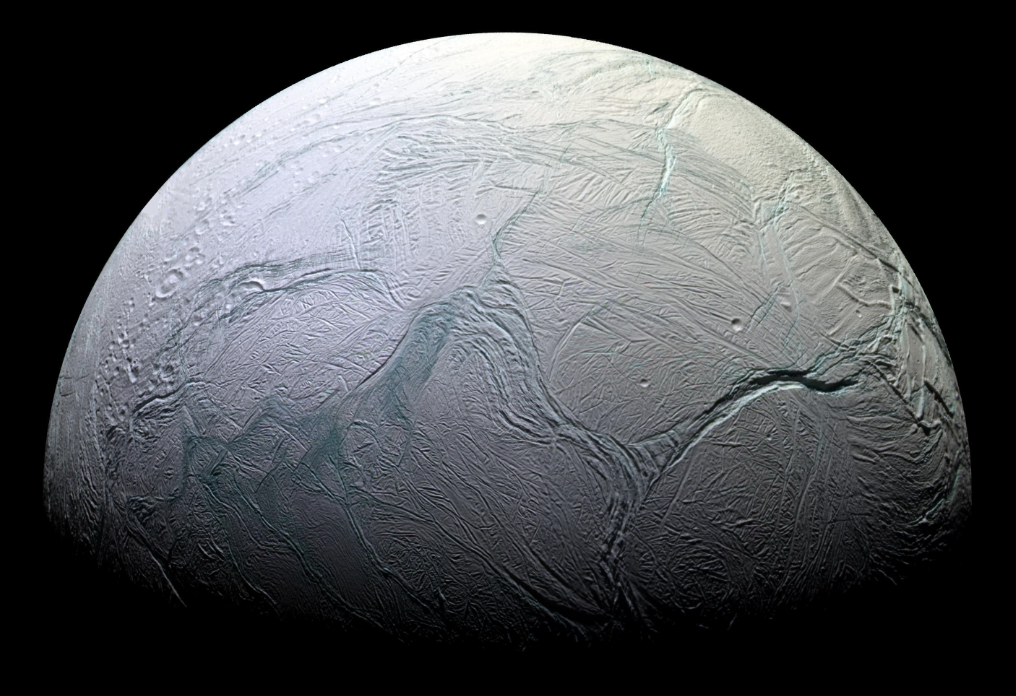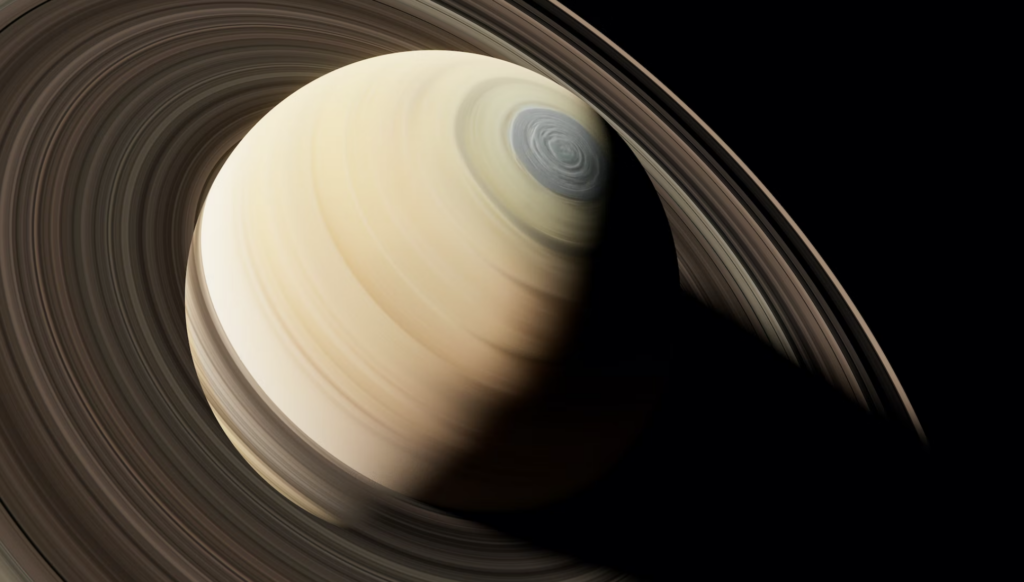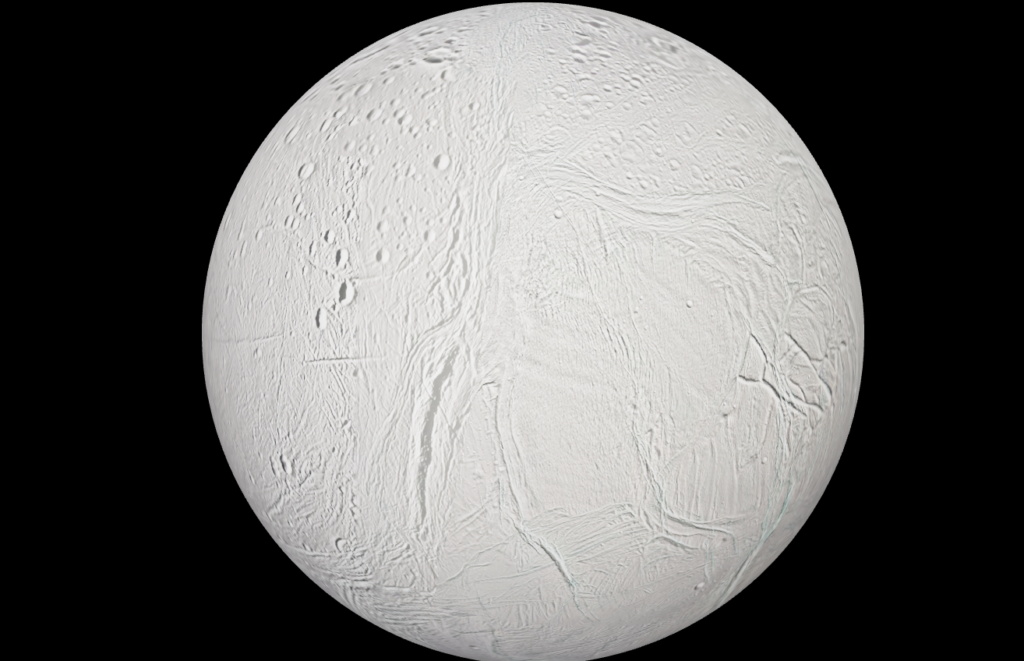Enceladus- Saturn’s Breakthrough Ocean Moon
Table of Contents

Few moons create excitement like Enceladus! The ice-covered moon is the most reflective object in the solar system. Cassini flybys turned planetary science on its head! The data analysis is ongoing nearly a decade after Cassini left Enceladus.
Gravitational Flexing
The interior core of Enceladus increases in temperature as the moon responds to the gravitational forces of Saturn.
- Enceladus is tidally locked.
- One side of the moon always faces Saturn
- Highest gravitational forces from Saturn
- One side of the moon faces away from Saturn
- Lower gravitational forces from Saturn
- Gravitational intensity changes during orbit
- The different gravitational forces create friction, which creates heat.
South Pole
Fissures
The south pole has large crust fractures. Cassini detected approximately 101 geysers located within the fractures. The geysers are ejecting “something fluid” hundreds of miles into space at about 800 miles per hour (1287 km per hour). A portion of the plume falls back to the surface of Enceladus. The other part enters into orbit around Saturn in the E-Ring.

Temperature
Scientists expected Enceladus’s surface temperature to be approximately -315℉ (-192℃). Roughly 80% of the sunlight is reflected from Enceladus. Scientists expected the poles to be colder than the Equatorial temperature.
Infrared spectrometer data of the entire south pole shocked the scientists with an average temperature of -304℉ (151℃). Data subsets are much warmer at -261℉ (-163℃). Why are the temperatures so much different than expected?
The crust is thinner
Doppler data analysis reveals that the average crust/ice shell thickness is between 11 and 14 miles (18 to 22 km). The South Poles’ crust/ice shell thickness is much closer to 3 miles (5 km). Scientists believe that there’s an ocean underneath the south pole!
Plumes
Scientists couldn’t perform ground-level testing of the ocean inside Enceladus, but they could analyze the ejected matter from the underwater sea. Cassini flew through the plume of vapor seven times over a decade.
- Mass spectrometer data analysis reveals that the vapor plume contains methane, ammonia, nitrogen-bearing organic compounds, oxygen, and carbon.
- Liquid water and rock interact at temperatures greater than 200℉ (90℃) and create Silica Nanograins. Silica nanograins equal hydrothermal activity.
- Hydrothermal sites in the earth’s oceans contain organisms like tubeworms and crabs.

Mission time!
NASA relies on the scientific community to define and prioritize scientific questions. Once per decade, the National Academy of Science (NAS) generates recommendations for NASA.
Two thousand four hundred members, including 190 Nobel prize winners, create recommendations for NASA.
In 2022 the NAS recommended that NASA develops the Enceladus Orilander. The projected launch date is 2038, landing on Enceladus’s surface in 2050.
The planned mission will orbit for 18 months and then collect data on the surface for 24 months. Plume data will be collected and analyzed:
- Inside the E-Ring
- On the surface as the plume drops material onto the Orilander.
- Below the surface with plume content that’s “dug up” with a probe.
Wrap up!
Enceladus is exciting! The building blocks of life might all be ready for discovery in an ocean buried under ice.
